How well you understand a literary / non-literary work can be represented on an infinite scale.
Like a number line, this scale starts from 0 and stretches to the right--all the way to infinite expertise. You could keep studying and studying, and there would always be more to uncover from your texts.
So, from a practical standpoint, when can we say that our understanding of a text is 'good enough' for Paper 2 and call it a day? In other words: "What exactly do I need to know about each of my texts? What do I need to do to reach the required level of understanding?"
Let's answer these questions now!
Essential Knowledge
A text can be understood at three levels
- Basic
- Better (for lack of a 'better' word)
- Advanced
Or in the language of the expanding brain meme:
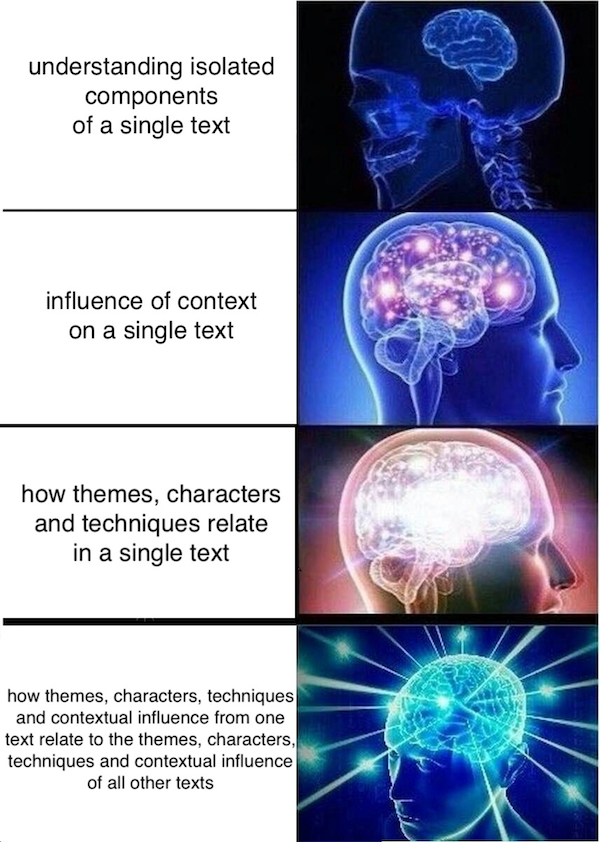
Level 1: Basic
This pyramid summarises the basic knowledge you need to know for a Paper 2 text.
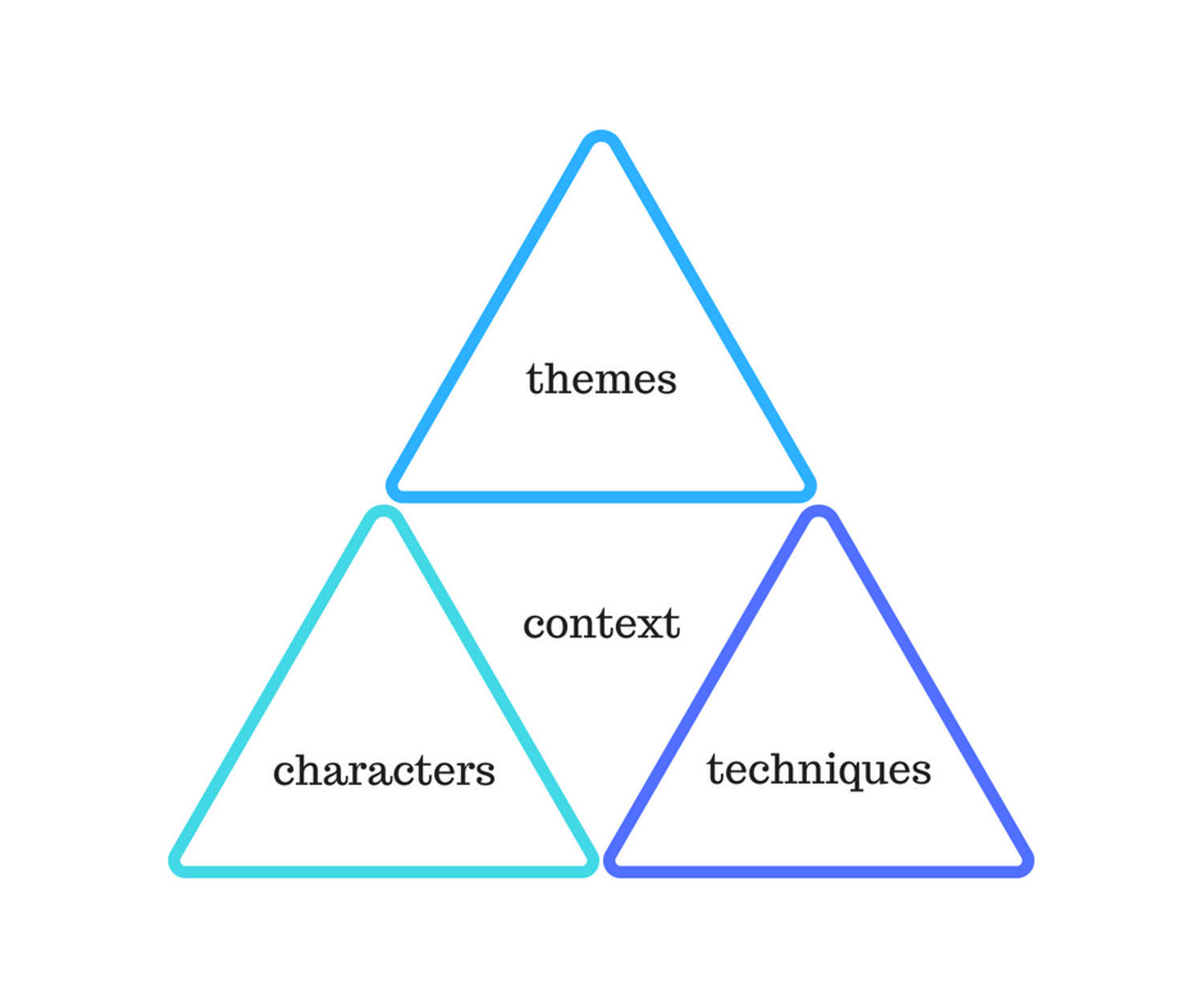
Themes are the ideas or messages explored consistently throughout a text. Think: general ideas like “oppression”, “exploration” and “morality”.
Characters are the actors in a text. They play an important role in plays, short stories and novels but are less important in poems. In poems, the main 'character' is usually the speaker.
Techniques are the tools writers use to convey meaning and elicit thought and emotion from the audience. Think: metaphor, juxtaposition and tone.
Context is placed in the centre of the pyramid to represent its influence on an entire text. Context is the social environment in which a text was written, as well as the historical events that probably led to its creation.
Level 2: Contextual influence
The context may not be punching you in the face when you read the words on the page (i.e., the context may not be obvious to naive reader), but be sure that it lurks behind (almost) every line. Every aspect of a text--its themes, characters and techniques--is influenced, to some degree, by its context. Being aware of the context unlocks the second level of understanding.
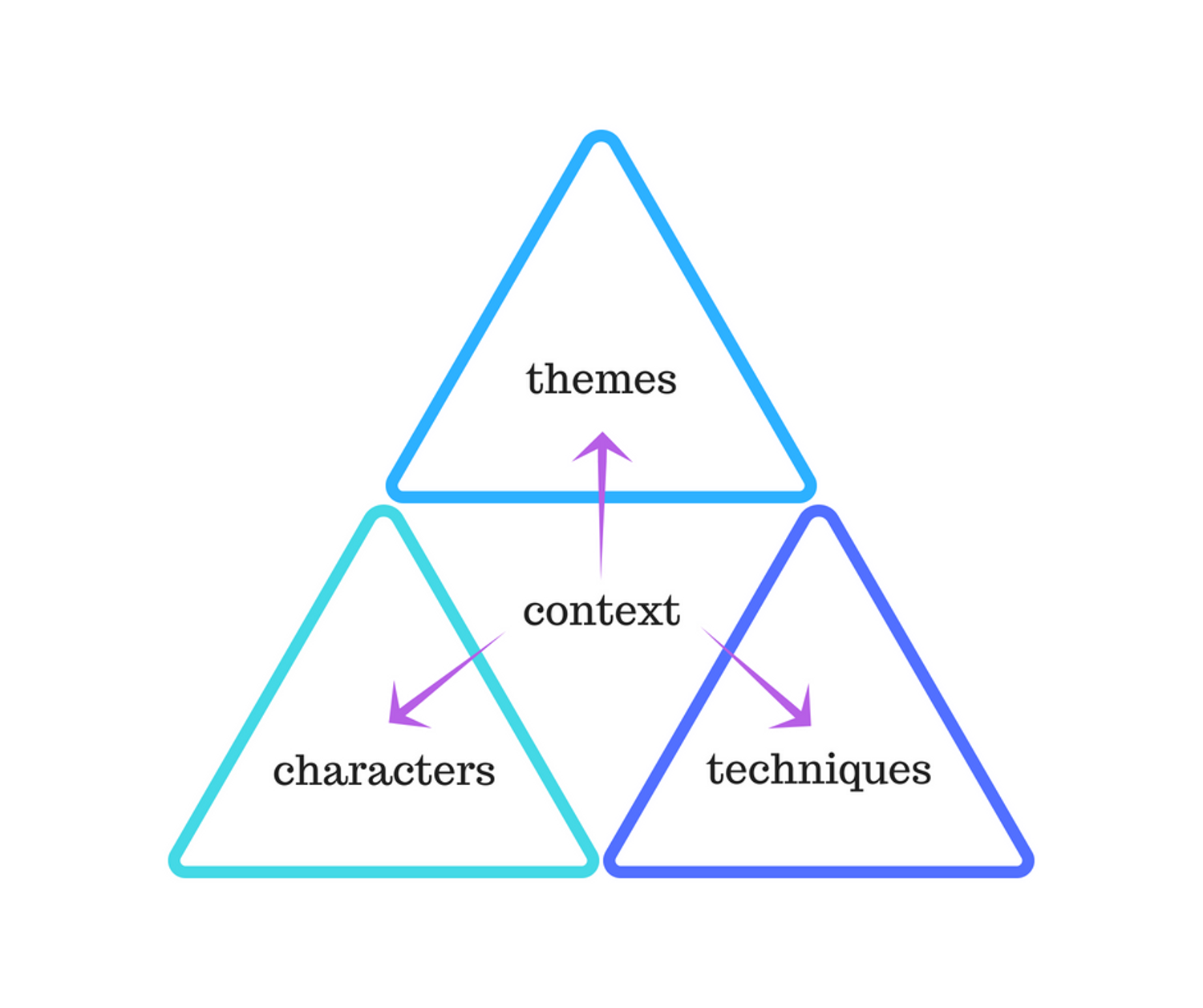
Level 3: Relationships
Finally, to answer an IB English Paper 2 question at a 7 standard, you must understand how the outer elements in the pyramid interact with one another.
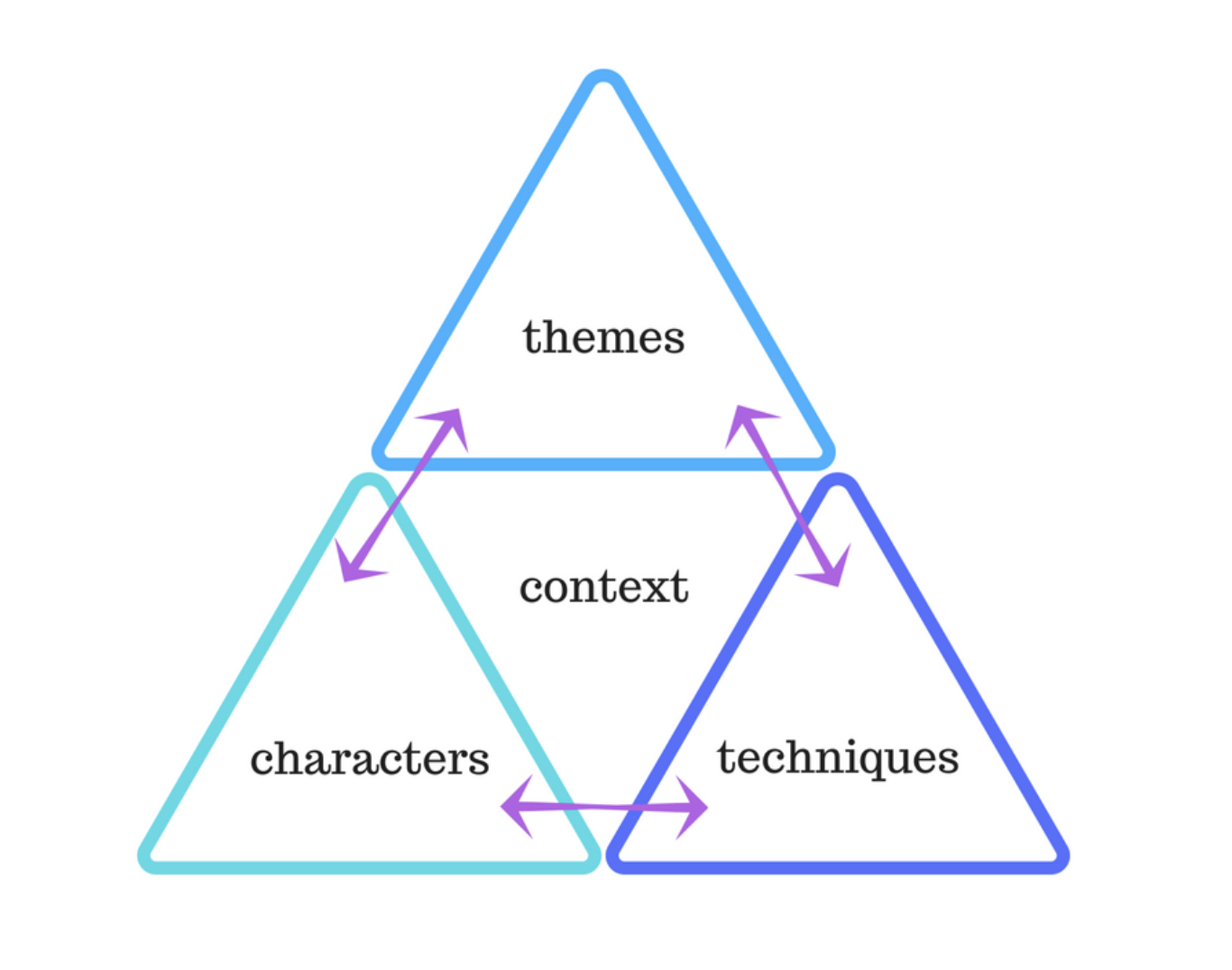
Here are some concrete examples of how the outer elements can relate to each other:
- Characters are often associated with certain techniques. For example, diction is used frequently by Bernard Shaw to characterise Eliza Doolittle in Pygmalion, because Shaw wants to emphasise the refinements Eliza's speech as she rises through the ranks of British society. Can you think of a technique that is frequently used with a certain character in your own texts?
- Characters contribute to specific themes. For example, Arthur Miller uses priests as characters to explore the theme of morality in the play The Crucible.
- Themes can be associated with certain techniques.
Why do we need to understand these relationships for Paper 2?
- Prompts in Paper 2 often ask you to explicitly connect ideas with characters, or characters with techniques, or techniques with themes. It's advantageous to prepare these connections.
- Connecting these aspects makes your analysis much more sophisticated. You gain instant brownie points in the analysis criterion.
But hang on. Don't we have, like, three texts to study for Paper 2? And don't we have to compare and contrast them?
Yes.
Level 4: Boss level
Just when you thought you'd beaten the final boss, there is actually a fourth level of understanding.
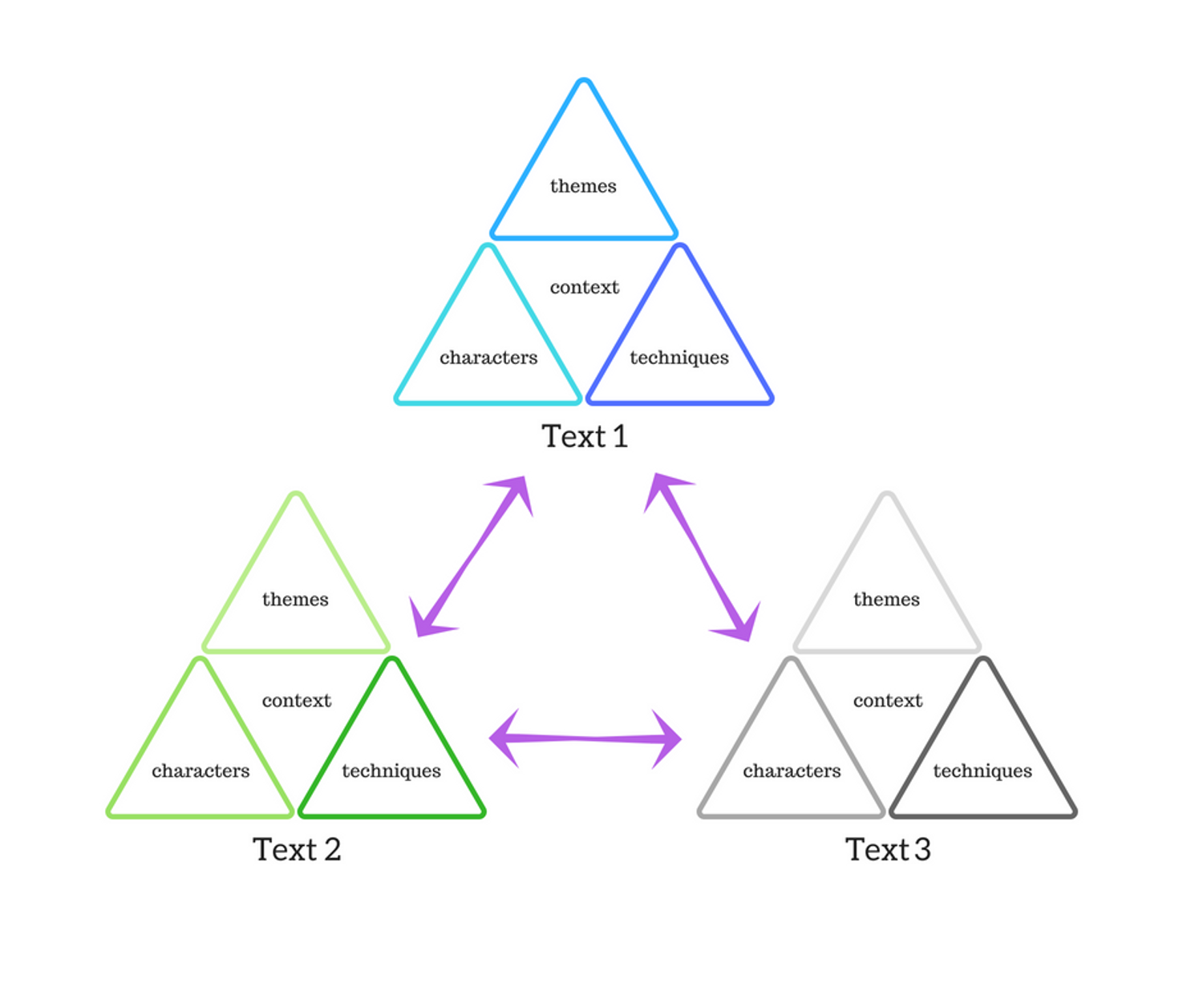
This crazy diagram represents intratextual (within the same text) and intertextual (between different texts) knowledge. Levels 1 to 3 are concerned with understanding individual texts to a high level. Level 4 builds on top of this knowledge by understanding how specific components in each text relate to each other.
Read through the following questions carefully. They give you an idea of the types of intertextual relationships you'll need to learn about for each pair of your texts.
- “How are the purpose, meaning and effect of technique A in Pygmalion similar or different compared to the same technique in The Crucible?”
- “What are the similarities and differences between the overall contexts, themes, characters and techniques of Pygmalion and Earnest?”
- “Do the unique contexts of Pygmalion and The Crucible influence the themes, characters and techniques similarly or differently?”
- “Do themes and characters, characters and techniques, and techniques and themes relate to each other in different ways in Earnest and The Crucible?”
- “Is your answer to Question 4 driven by contextual influences?”
Don't panic if this all sounds a bit overwhelming. These examples simply put into words what the pyramid diagrams show. It's actually very intuitive. For example, take a look at the Level 3 diagram which shows the relationships between themes, characters and techniques. Now, notice how Question 4 above is just about comparing these intratext relationships across different texts.
Still confused? Let's make this super concrete. In an example we'll see in Part 3, both Earnest and Pygmalion use situational irony (i.e., technique) around the idea of morality (theme) to either create humour or shock (effect). What we just did here--in one sentence--qualifies as pure, final boss-level knowledge. We are saying that this relationship between a specific technique and a specific theme is present across two texts, however the effects on the audiences are slightly different in each text. This is an example of comparison and contrast at an advanced level--exactly the level of insight that will earn you a 7 in IB English Paper 2.
Now the question is, how do we get there?